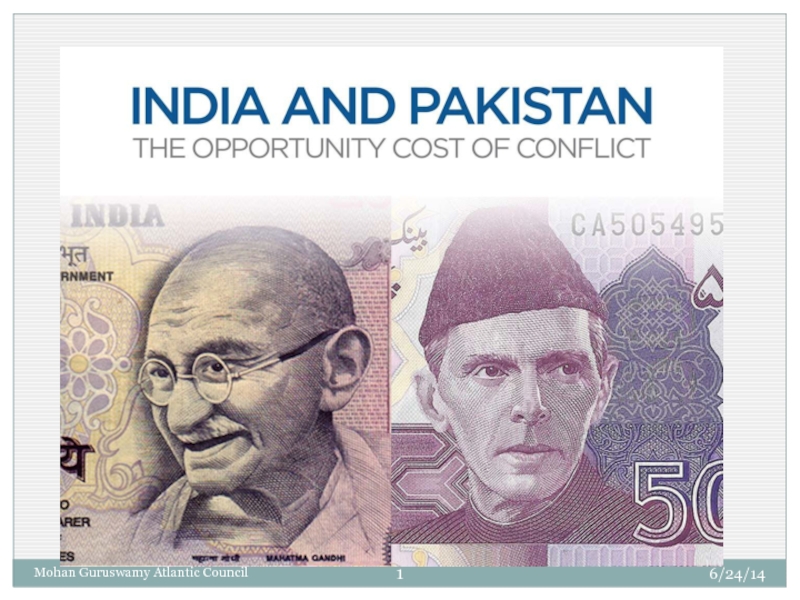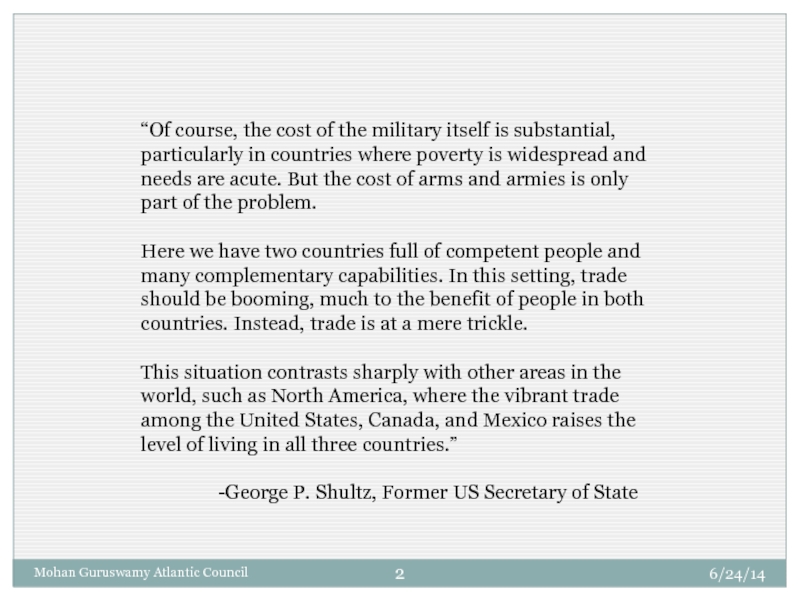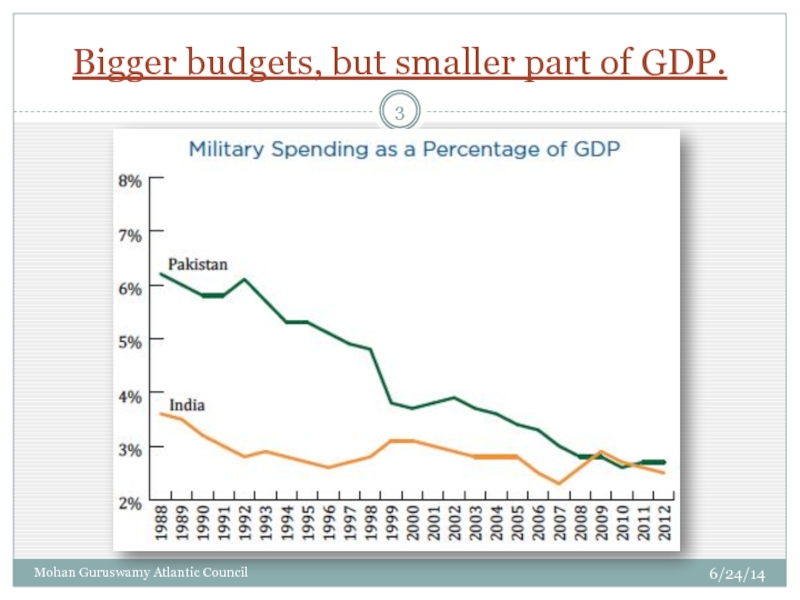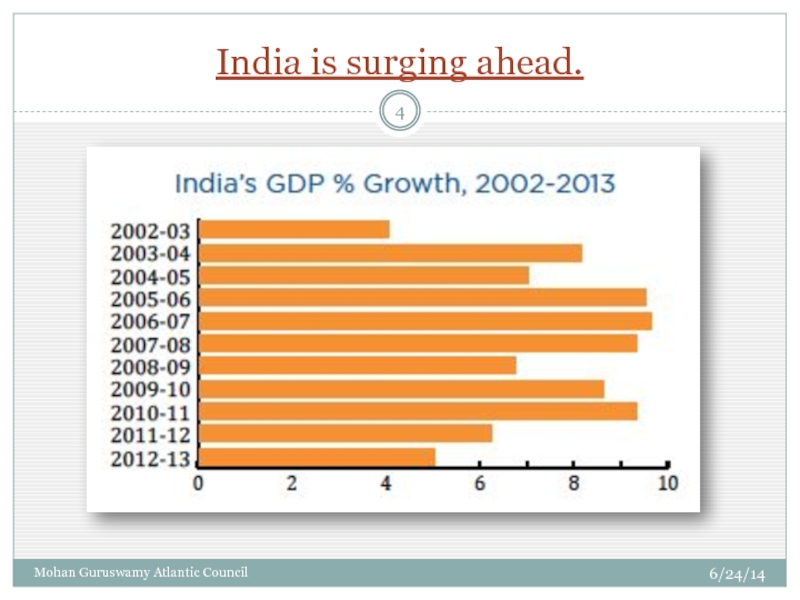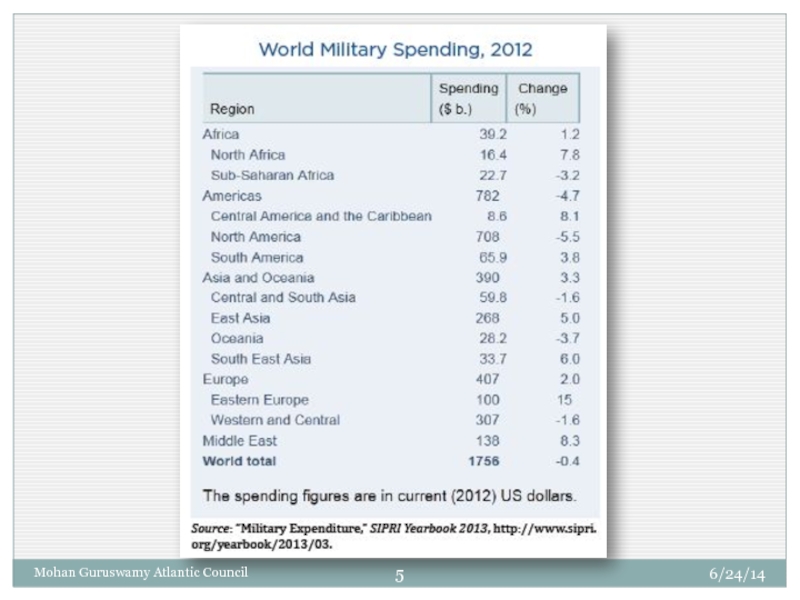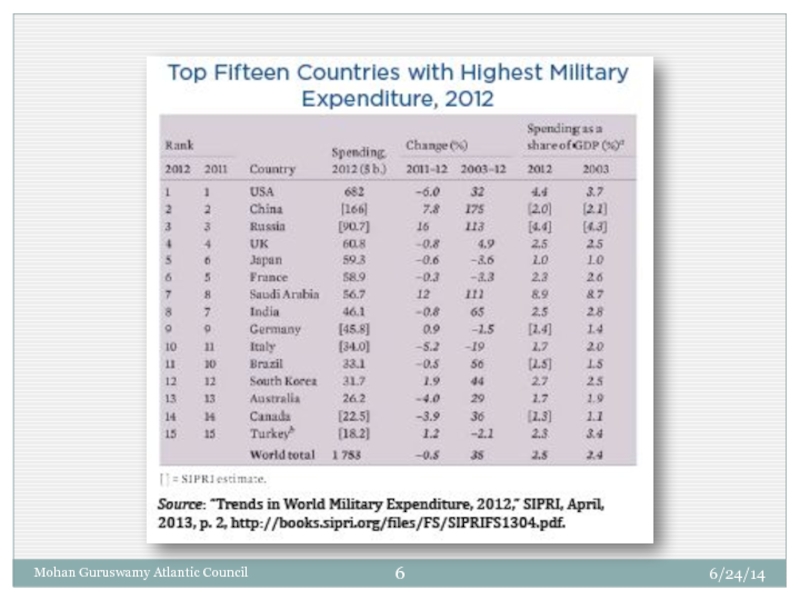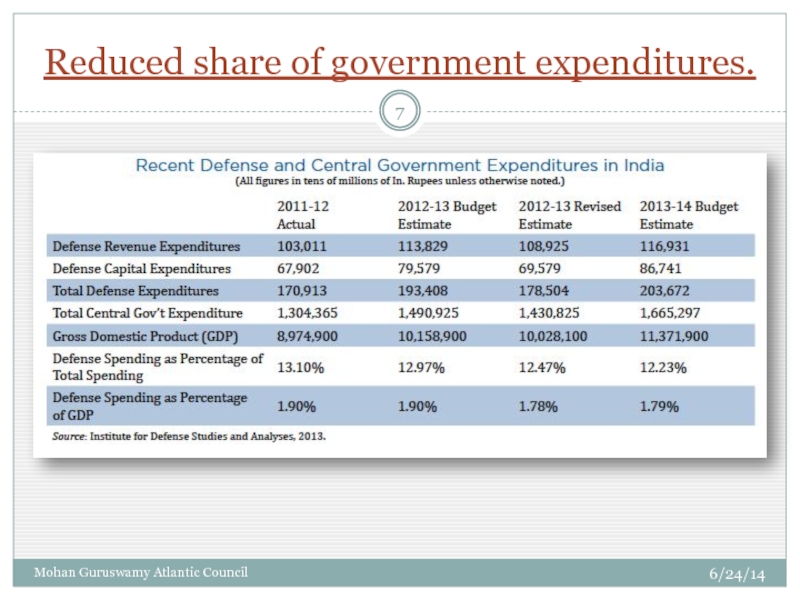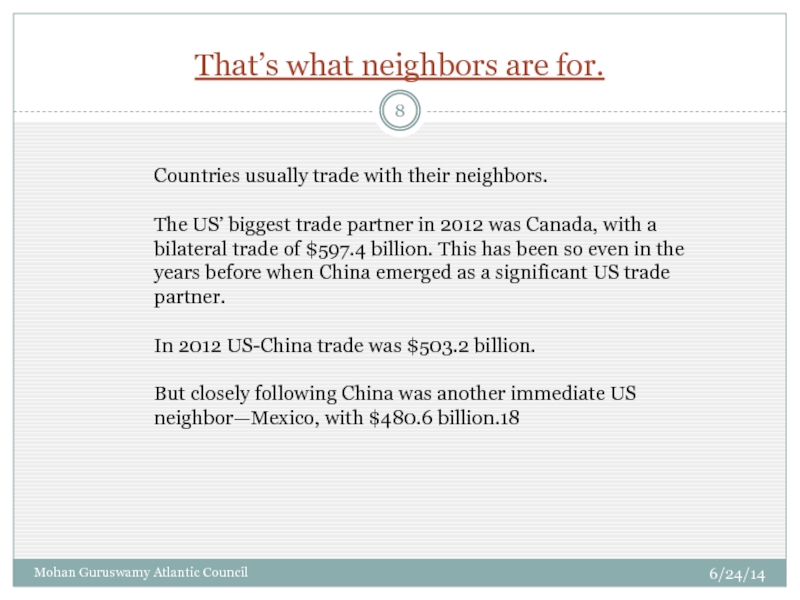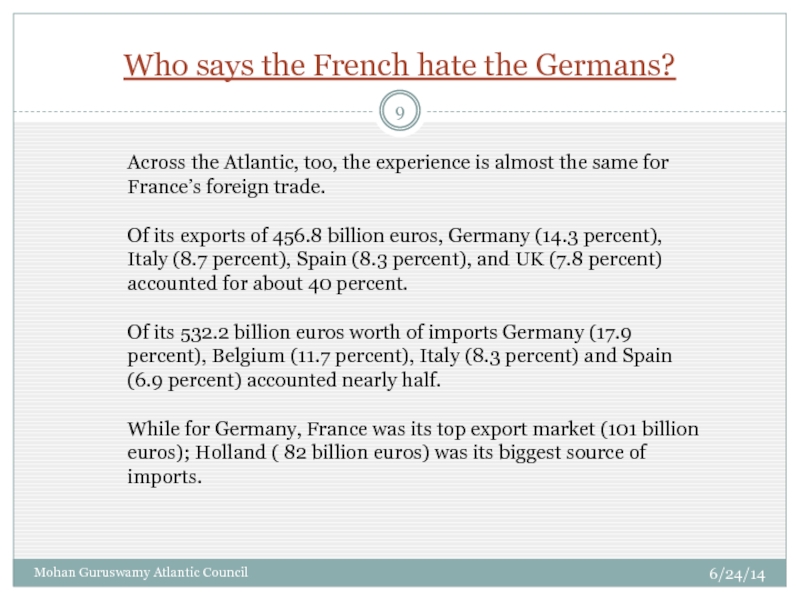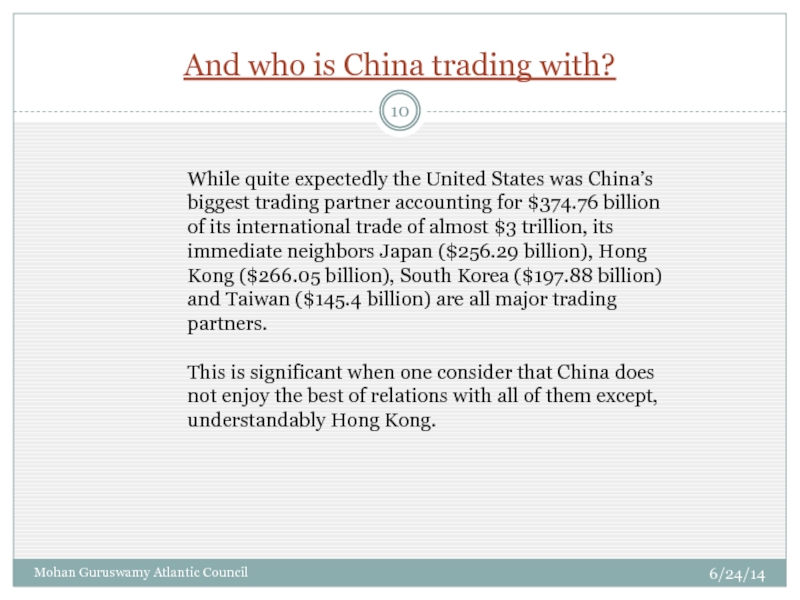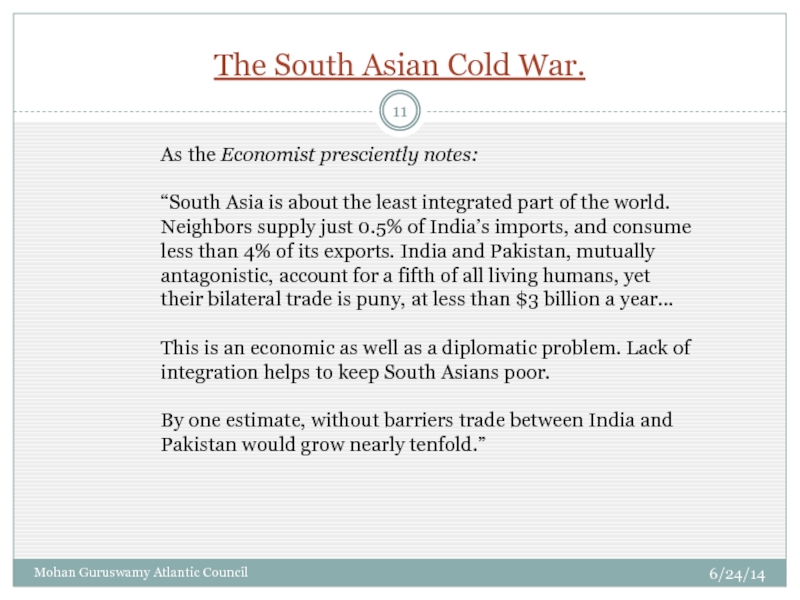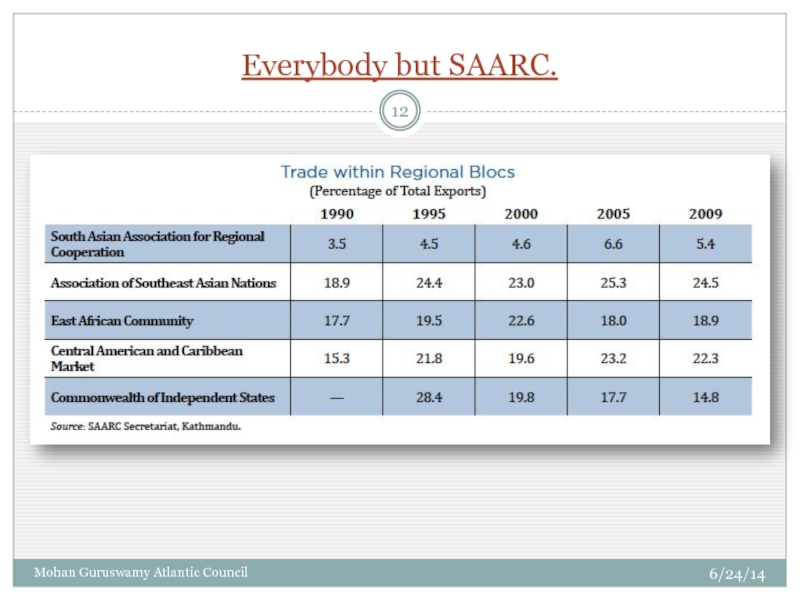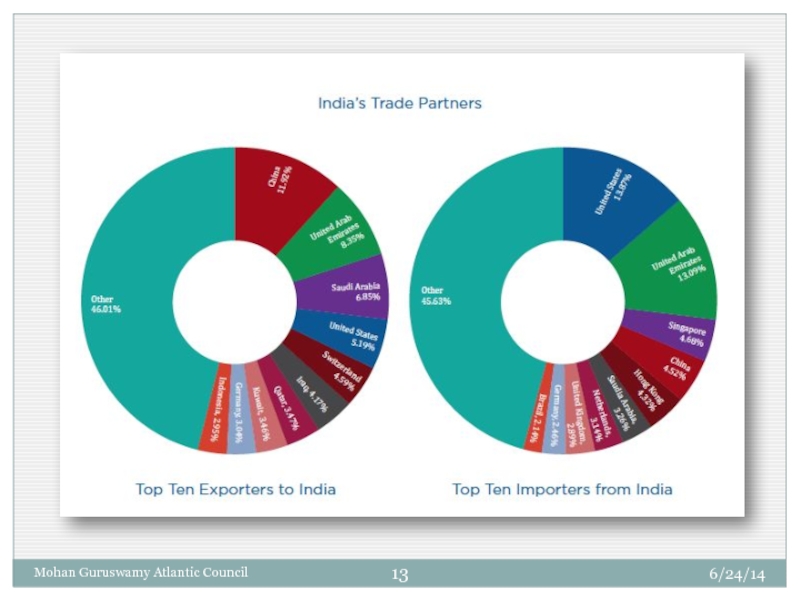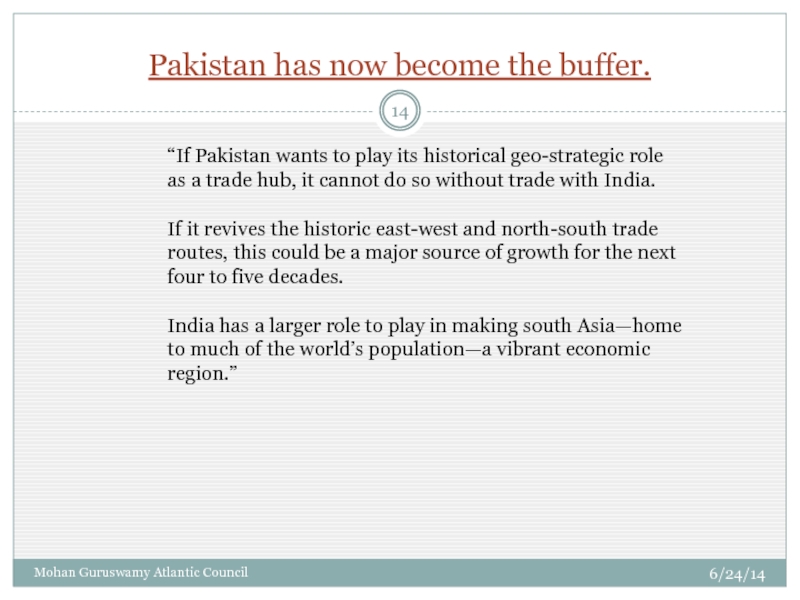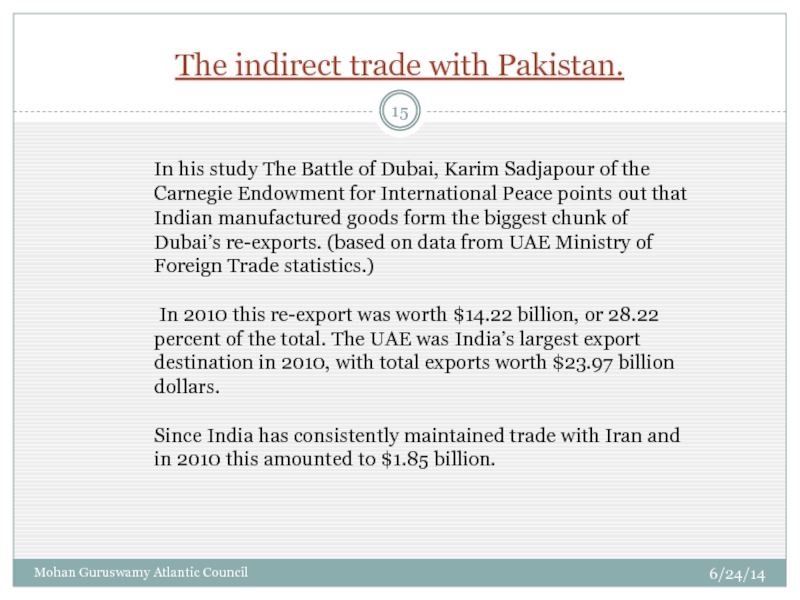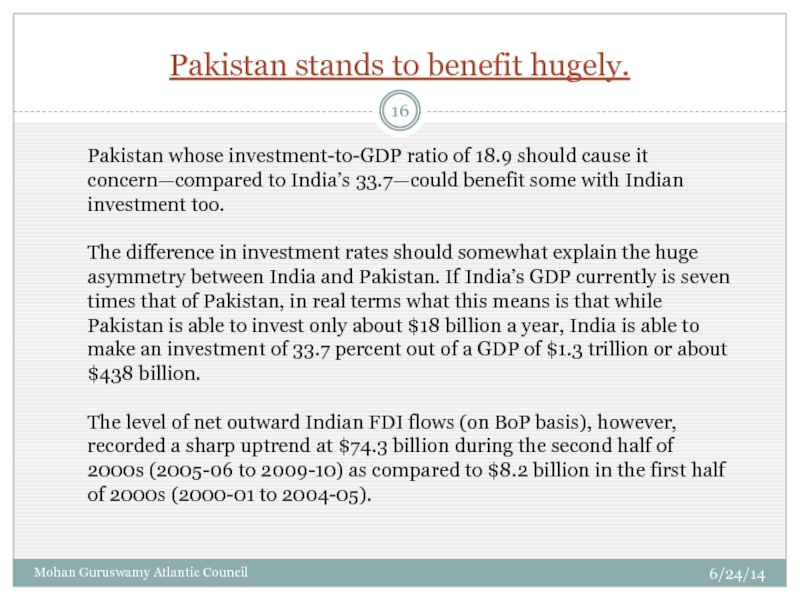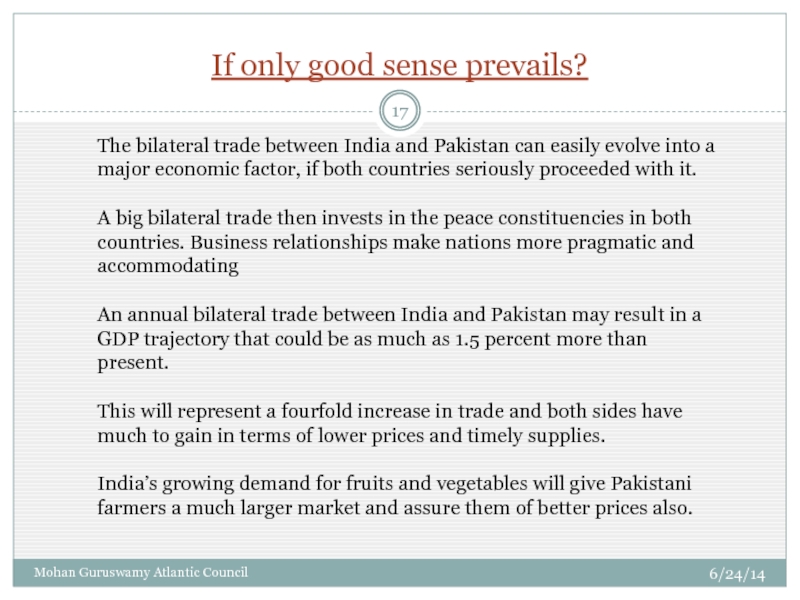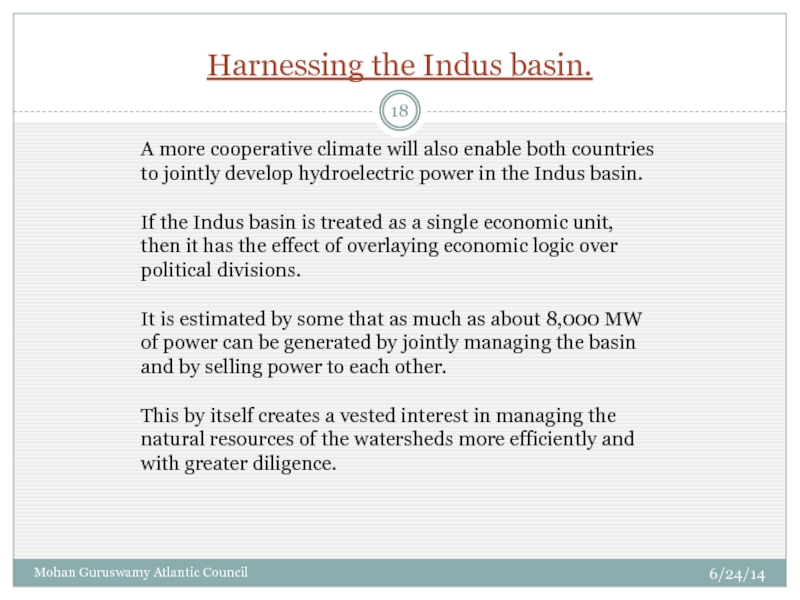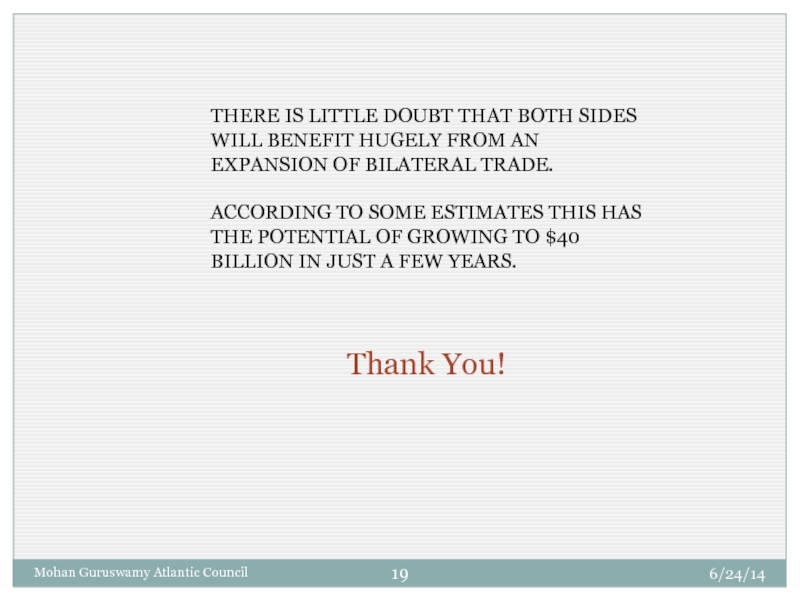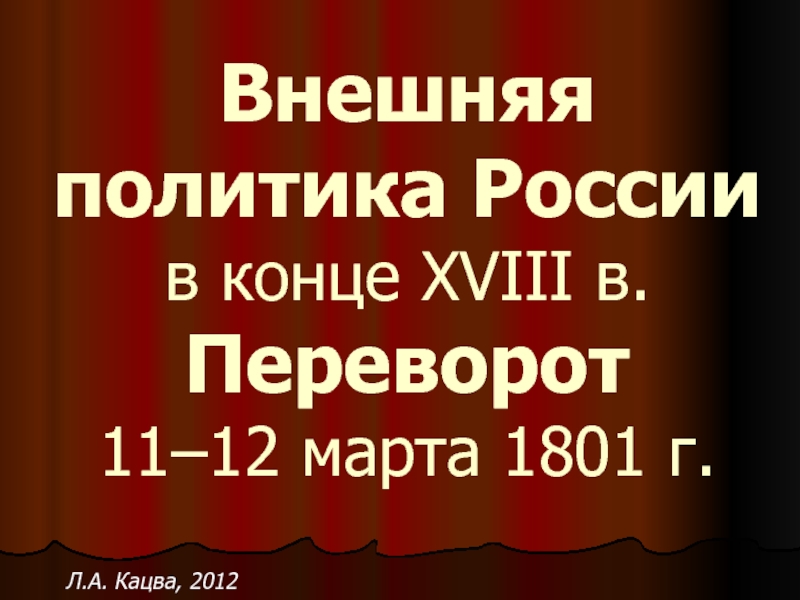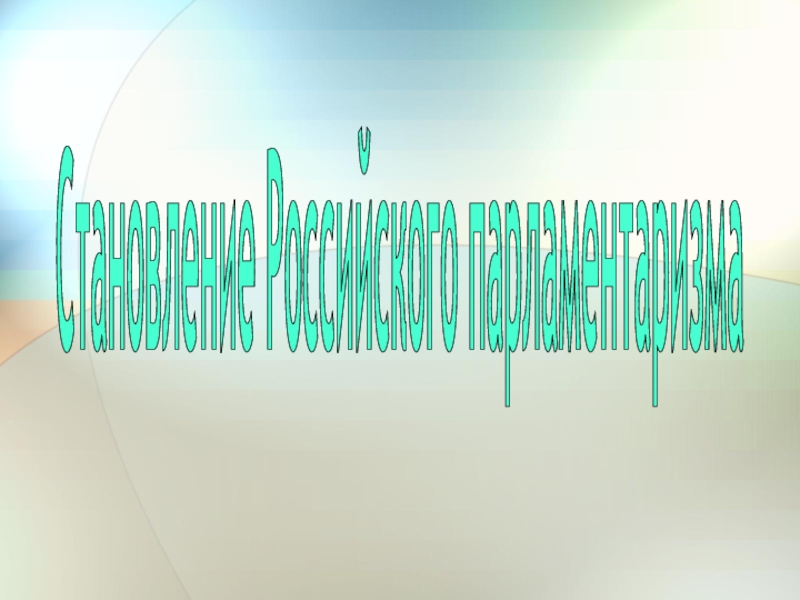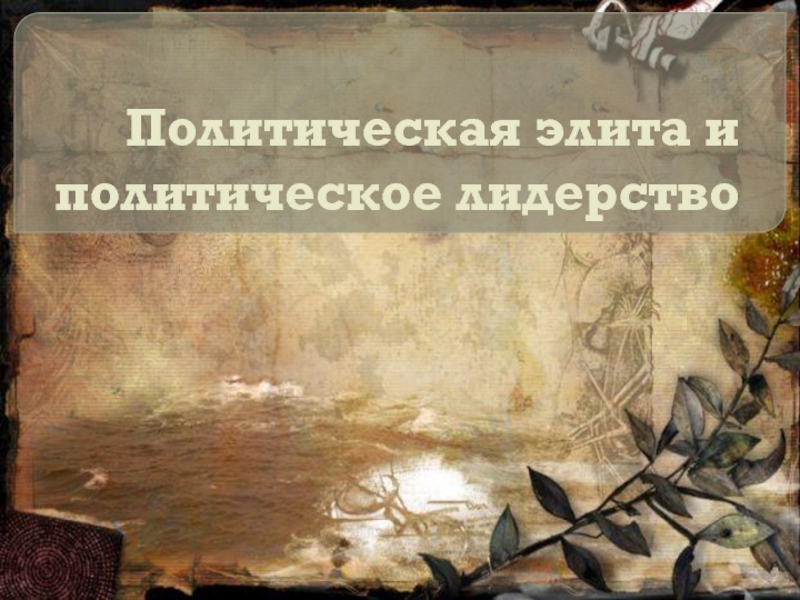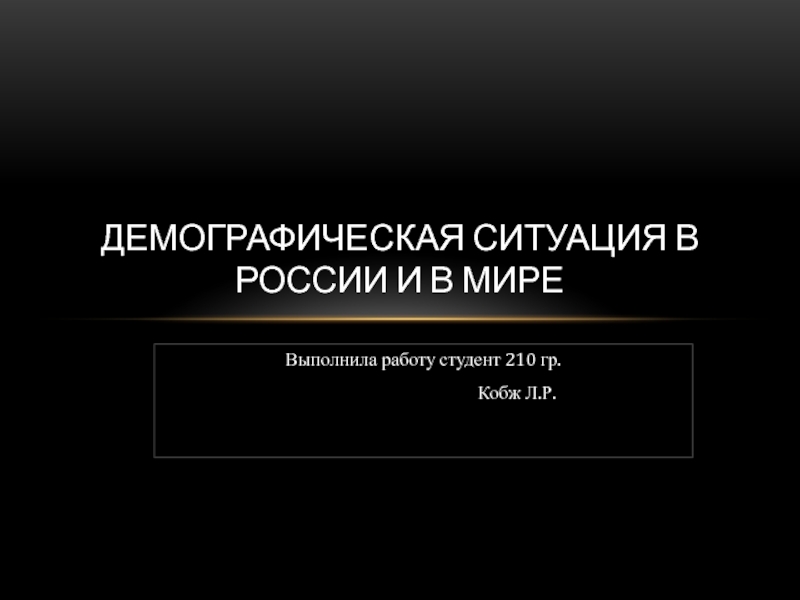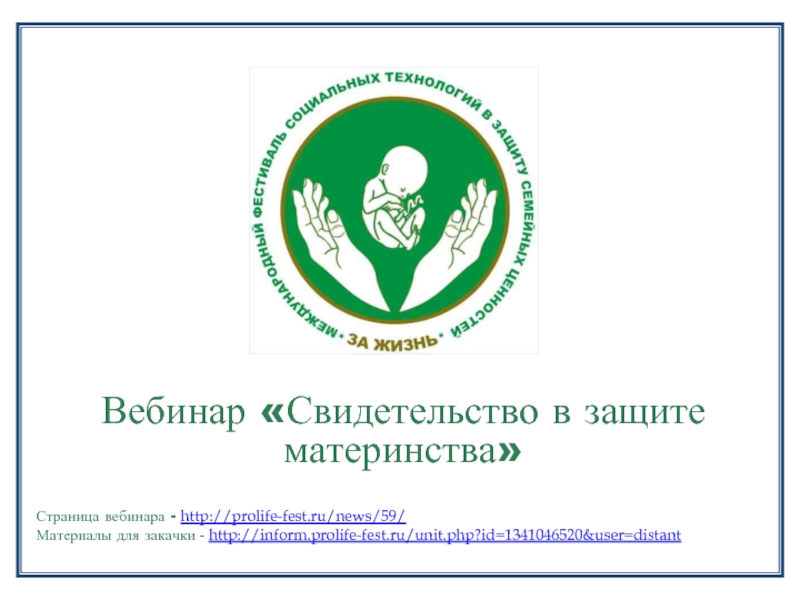- Главная
- Разное
- Дизайн
- Бизнес и предпринимательство
- Аналитика
- Образование
- Развлечения
- Красота и здоровье
- Финансы
- Государство
- Путешествия
- Спорт
- Недвижимость
- Армия
- Графика
- Культурология
- Еда и кулинария
- Лингвистика
- Английский язык
- Астрономия
- Алгебра
- Биология
- География
- Детские презентации
- Информатика
- История
- Литература
- Маркетинг
- Математика
- Медицина
- Менеджмент
- Музыка
- МХК
- Немецкий язык
- ОБЖ
- Обществознание
- Окружающий мир
- Педагогика
- Русский язык
- Технология
- Физика
- Философия
- Химия
- Шаблоны, картинки для презентаций
- Экология
- Экономика
- Юриспруденция
1 презентация
Содержание
- 1. 1
- 2. “Of course, the cost of the military
- 3. Bigger budgets, but smaller part of GDP. 6/24/14 Mohan Guruswamy Atlantic Council
- 4. India is surging ahead. 6/24/14 Mohan Guruswamy Atlantic Council
- 5. 6/24/14 Mohan Guruswamy Atlantic Council
- 6. 6/24/14 Mohan Guruswamy Atlantic Council
- 7. Reduced share of government expenditures. 6/24/14 Mohan Guruswamy Atlantic Council
- 8. Countries usually trade with their neighbors.
- 9. Across the Atlantic, too, the experience is
- 10. While quite expectedly the United States was
- 11. As the Economist presciently notes:
- 12. Everybody but SAARC. 6/24/14 Mohan Guruswamy Atlantic Council
- 13. 6/24/14 Mohan Guruswamy Atlantic Council
- 14. “If Pakistan wants to play its historical
- 15. In his study The Battle of Dubai,
- 16. Pakistan whose investment-to-GDP ratio of 18.9 should
- 17. The bilateral trade between India and Pakistan
- 18. A more cooperative climate will also enable
- 19. THERE IS LITTLE DOUBT THAT BOTH SIDES
Слайд 2“Of course, the cost of the military itself is substantial, particularly
Here we have two countries full of competent people and many complementary capabilities. In this setting, trade should be booming, much to the benefit of people in both countries. Instead, trade is at a mere trickle.
This situation contrasts sharply with other areas in the world, such as North America, where the vibrant trade among the United States, Canada, and Mexico raises the level of living in all three countries.”
-George P. Shultz, Former US Secretary of State
6/24/14
Mohan Guruswamy Atlantic Council
Слайд 8Countries usually trade with their neighbors.
The US’ biggest trade partner
In 2012 US-China trade was $503.2 billion.
But closely following China was another immediate US neighbor—Mexico, with $480.6 billion.18
That’s what neighbors are for.
6/24/14
Mohan Guruswamy Atlantic Council
Слайд 9Across the Atlantic, too, the experience is almost the same for
Of its exports of 456.8 billion euros, Germany (14.3 percent), Italy (8.7 percent), Spain (8.3 percent), and UK (7.8 percent) accounted for about 40 percent.
Of its 532.2 billion euros worth of imports Germany (17.9 percent), Belgium (11.7 percent), Italy (8.3 percent) and Spain (6.9 percent) accounted nearly half.
While for Germany, France was its top export market (101 billion euros); Holland ( 82 billion euros) was its biggest source of imports.
Who says the French hate the Germans?
6/24/14
Mohan Guruswamy Atlantic Council
Слайд 10While quite expectedly the United States was China’s biggest trading partner
This is significant when one consider that China does not enjoy the best of relations with all of them except, understandably Hong Kong.
And who is China trading with?
6/24/14
Mohan Guruswamy Atlantic Council
Слайд 11As the Economist presciently notes:
“South Asia is about the least
This is an economic as well as a diplomatic problem. Lack of integration helps to keep South Asians poor.
By one estimate, without barriers trade between India and Pakistan would grow nearly tenfold.”
The South Asian Cold War.
6/24/14
Mohan Guruswamy Atlantic Council
Слайд 14“If Pakistan wants to play its historical geo-strategic role as a
If it revives the historic east-west and north-south trade routes, this could be a major source of growth for the next four to five decades.
India has a larger role to play in making south Asia—home to much of the world’s population—a vibrant economic region.”
Pakistan has now become the buffer.
6/24/14
Mohan Guruswamy Atlantic Council
Слайд 15In his study The Battle of Dubai, Karim Sadjapour of the
In 2010 this re-export was worth $14.22 billion, or 28.22 percent of the total. The UAE was India’s largest export destination in 2010, with total exports worth $23.97 billion dollars.
Since India has consistently maintained trade with Iran and in 2010 this amounted to $1.85 billion.
The indirect trade with Pakistan.
6/24/14
Mohan Guruswamy Atlantic Council
Слайд 16Pakistan whose investment-to-GDP ratio of 18.9 should cause it concern—compared to
The difference in investment rates should somewhat explain the huge asymmetry between India and Pakistan. If India’s GDP currently is seven times that of Pakistan, in real terms what this means is that while Pakistan is able to invest only about $18 billion a year, India is able to make an investment of 33.7 percent out of a GDP of $1.3 trillion or about $438 billion.
The level of net outward Indian FDI flows (on BoP basis), however, recorded a sharp uptrend at $74.3 billion during the second half of 2000s (2005-06 to 2009-10) as compared to $8.2 billion in the first half of 2000s (2000-01 to 2004-05).
Pakistan stands to benefit hugely.
6/24/14
Mohan Guruswamy Atlantic Council
Слайд 17The bilateral trade between India and Pakistan can easily evolve into
A big bilateral trade then invests in the peace constituencies in both countries. Business relationships make nations more pragmatic and accommodating
An annual bilateral trade between India and Pakistan may result in a GDP trajectory that could be as much as 1.5 percent more than present.
This will represent a fourfold increase in trade and both sides have much to gain in terms of lower prices and timely supplies.
India’s growing demand for fruits and vegetables will give Pakistani farmers a much larger market and assure them of better prices also.
If only good sense prevails?
6/24/14
Mohan Guruswamy Atlantic Council
Слайд 18A more cooperative climate will also enable both countries to jointly
If the Indus basin is treated as a single economic unit, then it has the effect of overlaying economic logic over political divisions.
It is estimated by some that as much as about 8,000 MW of power can be generated by jointly managing the basin and by selling power to each other.
This by itself creates a vested interest in managing the natural resources of the watersheds more efficiently and with greater diligence.
Harnessing the Indus basin.
6/24/14
Mohan Guruswamy Atlantic Council
Слайд 19THERE IS LITTLE DOUBT THAT BOTH SIDES WILL BENEFIT HUGELY FROM
ACCORDING TO SOME ESTIMATES THIS HAS THE POTENTIAL OF GROWING TO $40 BILLION IN JUST A FEW YEARS.
Thank You!
6/24/14
Mohan Guruswamy Atlantic Council
